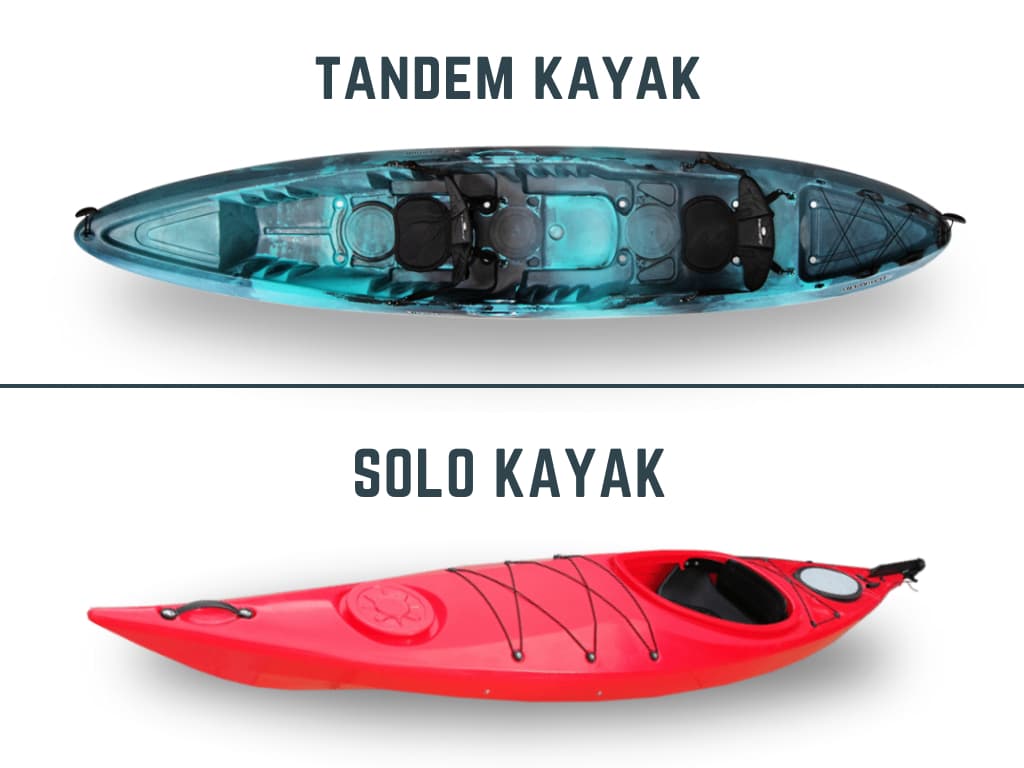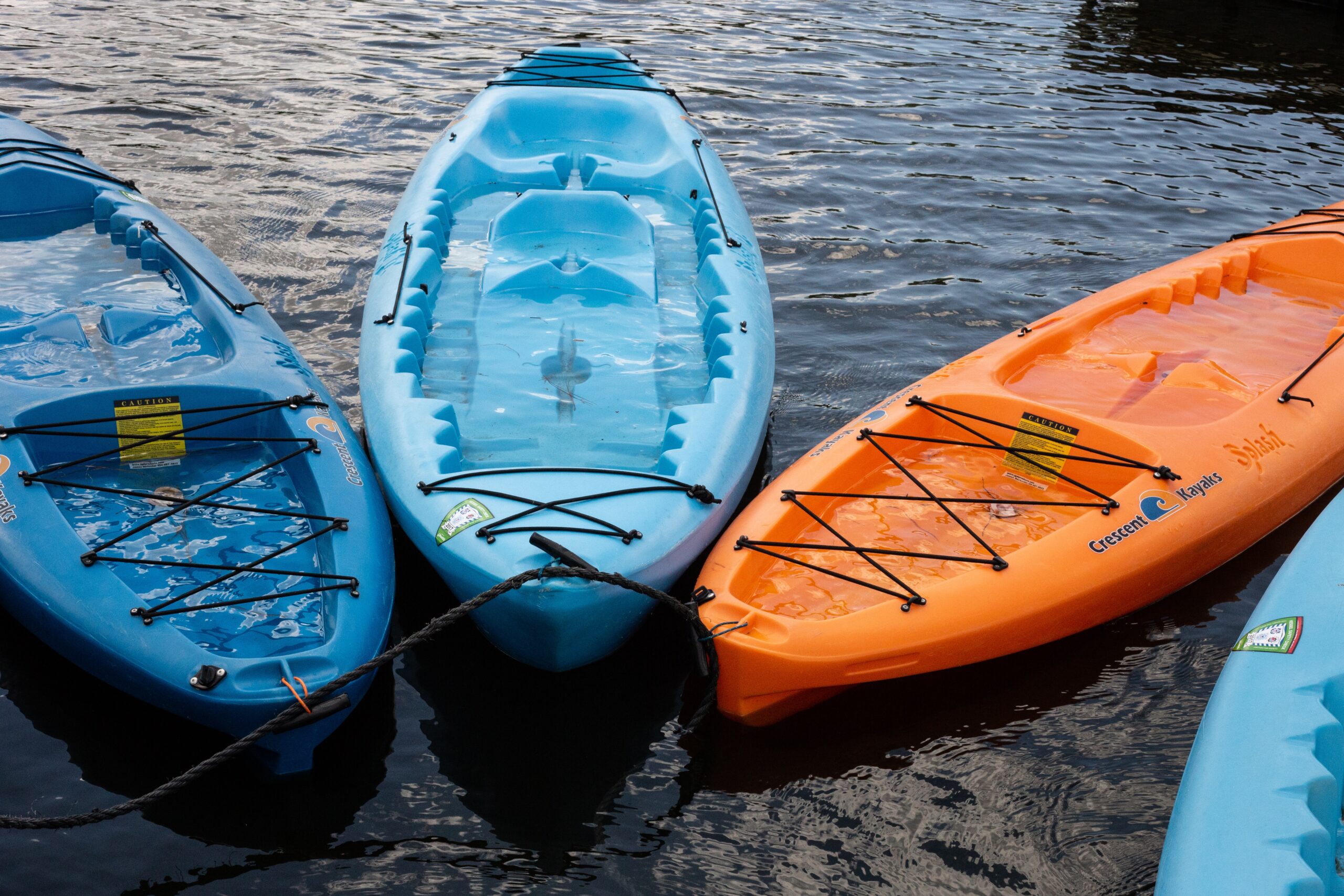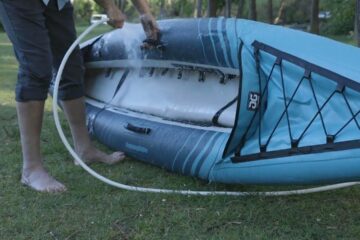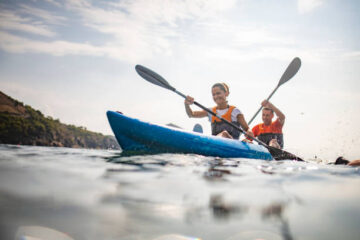Thinking about kayaking? The first step is crucial: How to choose a kayak. It’s not a one-size-fits-all deal. Different kayaks serve different needs. Are you into calm lakes or rapid rivers? Your choice will hinge on these factors.
When choosing a kayak, consider factors like width for stability, length for efficiency and storage, depth for comfort and storage, and weight capacity based on your needs and experience level. Sit-on-top kayaks offer a weight capacity of 350-400 pounds, and tandem kayaks can accommodate 500-600 pounds.
In this guide, we’ll help you make an informed choice. Ready to find your perfect kayak? Let’s dive in.
Key Takeaways:
- Match your kayak to your activities – fishing, touring, or whitewater.
- Consider materials, weight, and budget when choosing.
- Decide between solo or tandem kayaking based on your preference.
How To Choose A Kayak?
When it comes to choosing the perfect kayak, there are several key factors to consider. Let’s dive into the essentials that will help you make the right decision for your kayaking adventures.
Find Out Your Kayak’s Purpose
Ask yourself: What will you use it for? There are three main types:
- Fishing: Stable and has storage.
- Touring: Long and sleek for distance.
- Whitewater: Short and agile for rapids.
Your activity defines the kayak you need. Fishing requires space for gear. Touring needs speed and comfort. Whitewater demands quick turns. Choose based on your main use. This ensures you get the most out of your kayak. So, what’s your kayaking goal? Let’s find the right fit.
Types of Kayaks
Sit-on-top kayaks are user-friendly, providing stability and ease of entry. They suit beginners and warm climates, as they’re self-draining and less confining. Traditional sit-in kayaks offer a snug cockpit, often with a spray skirt, suitable for cooler conditions. They provide better control and are favored for touring.
Kayak Categories:
- Recreational Kayaks: These are ideal for calm waters like lakes and slow-moving rivers. They’re stable and easy to maneuver, perfect for casual paddlers.
- Touring Kayaks: Designed for longer trips, touring kayaks are sleek and efficient, gliding through the water with ease. They offer ample storage for extended adventures.
- Fishing Kayaks: Fishing kayaks come equipped with features like rod holders and storage compartments, making them perfect for anglers seeking a quiet approach to their favorite fishing spots.
- Racing Kayaks: Built for speed, racing kayaks are narrow and streamlined, intended for competitive paddlers who want to maximize their performance.
- Specialty Kayaks: These cater to specific needs, such as whitewater kayaks for thrilling rapids or inflatable kayaks for portability.
Each kayak type has its unique advantages, so consider your intended use and preferences when choosing the right one for your adventures.
Kayak Materials, Weight, and Price
Choosing the right kayak involves material, weight, and price. Let’s break it down:
- Plastic or Aluminum Kayaks: These are common and affordable. Plastic is durable but heavy. Aluminum is lighter but can dent.
- Fiberglass Kayaks: Lighter than plastic. They are easier to carry. But they can crack. They are mid-range in price.
- Carbon Fiber Kayaks: Very light and strong. Best for speed. They are also the most expensive.
- Inflatable Kayaks: Easy to store and transport. Good for calm waters. They are generally cheaper but less durable.
- Built-in Kayak Wheels: Some kayaks come with wheels. This makes transport easy. It adds to the price but saves effort.
Each material has pros and cons. Plastic is good for beginners. Fiberglass offers a balance. Carbon fiber is for the serious kayaker. Inflatables are for casual use. Wheels add convenience.
Ideal Kayak Length
Kayak length matters. It affects speed, stability, and turning. Short kayaks are under 10 feet. They are good for tight turns. Ideal for rivers and small lakes. Long kayaks are over 12 feet long. They glide faster and track well. Best for open water and touring.
Mid-sized kayaks offer balance. They are between 10 and 12 feet. Good for various water types.
Here’s the deal:
- Short: Quick turns, less speed.
- Mid-sized: Versatile, moderate speed.
- Long: Fast, stable, but harder to turn.
Your activity will guide your choice. Want speed? Go long. Need agility? Go short. Looking for both? Pick mid-sized. Choose wisely for a better kayaking adventure.

Solo or Tandem Kayak: Which Is Right for You?
Choosing between a solo and tandem kayak depends on your preferences and plans.
Solo Kayak:
Solo kayaks are perfect if you prefer independence and want to paddle alone. They are lighter and easier to maneuver, making them suitable for navigating narrow waterways or exploring on your own.
Solo kayaks are also a great choice if you value solitude and want to enjoy the peacefulness of nature without distractions.
Tandem Kayak:
Tandem kayaks are designed for two people, making them ideal for couples, friends, or family outings. They offer teamwork and shared experiences, allowing you to enjoy the journey together.
Tandem kayaks can also be converted for solo paddling by adjusting the seating position.
The choice between a solo and tandem kayak hinges on your desire for solitude or companionship on the water. Consider your paddling goals and who you want to share your kayaking adventures with to make the right decision.
Final Words
Now, you know everything about “How to Choose A kayak”. Choosing the perfect kayak is a vital first step for your kayaking adventures. Consider your intended activities, the type of kayak that suits you best, materials, ideal length, and whether you prefer solo or tandem paddling. Fun fact – Kayaking can help you in losing your weight.
Armed with this knowledge, you can confidently select the kayak that aligns with your preferences and embark on memorable journeys on the water. Happy kayaking!
Enjoy reading? make sure to read our other kayak related posts.





[…] Entry/Exit: Choose a kayak that’s easy to get in and out […]
[…] Choosing the right kayak size is key to a great experience. It affects comfort, safety, and performance. Let’s explore the factors that influence this choice. […]